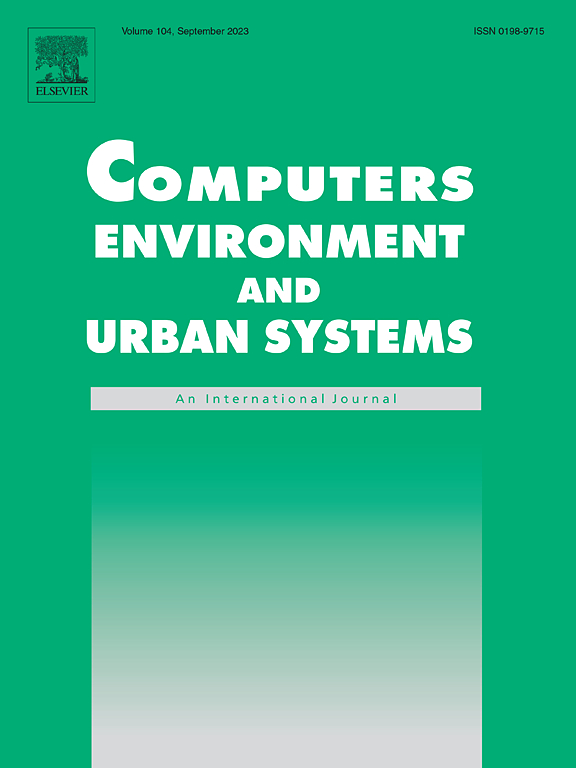Decoding (urban) form and function using spatially explicit deep learning
IF 7.1
1区 地球科学
Q1 ENVIRONMENTAL STUDIES
Computers Environment and Urban Systems
Pub Date : 2024-07-15
DOI:10.1016/j.compenvurbsys.2024.102147
引用次数: 0
Abstract
This paper explores how can geographical dimension be incorporated into deep learning designed to understand the composition of urban landscapes based on Sentinel 2 satellite imagery. Compared to standard computer vision, satellite imagery is unique as images sampled from the data form a continuous array, rather than being fully independent. We argue that the spatial configuration of the images is as important as the content of each image when attempting to capture a pattern that reflects the structure of the urban environment. We propose a series of approaches explicitly incorporating spatial dimension in the predictive pipeline based on the EfficientNetB4 convolutional neural network (CNN) and experimentally test their effect on model performance. The experiments in this study cover the scale of the sampled area, the effect of spatial augmentation, and the role of modelling (logit ensemble and histogram-based gradient-boosted classifiers) with and without the spatial context on the outputs of the neural network-generated vector of probabilities while trying to predict spatial signatures, a classification of primarily urban landscape based on form and function. The results suggest that certain ways of embedding spatial information, especially in the modelling step, consistently significantly improve the prediction accuracy and shall be considered on top of standard CNNs.利用空间显式深度学习解码(城市)形态和功能
本文探讨了如何将地理维度纳入深度学习,以了解基于哨兵 2 号卫星图像的城市景观构成。与标准计算机视觉相比,卫星图像是独特的,因为从数据中采样的图像形成一个连续阵列,而不是完全独立的。我们认为,在试图捕捉反映城市环境结构的模式时,图像的空间配置与每幅图像的内容同样重要。我们提出了一系列方法,在基于 EfficientNetB4 卷积神经网络 (CNN) 的预测管道中明确纳入空间维度,并通过实验测试它们对模型性能的影响。本研究中的实验涵盖了采样区域的规模、空间增强的效果以及建模(Logit 集合和基于直方图的梯度提升分类器)的作用,在尝试预测空间特征(主要是基于形式和功能的城市景观分类)时,有无空间背景对神经网络生成的概率向量输出的影响。结果表明,嵌入空间信息的某些方法,特别是在建模步骤中,可以持续显著地提高预测准确性,因此应考虑在标准 CNN 的基础上进行改进。
本文章由计算机程序翻译,如有差异,请以英文原文为准。
求助全文
约1分钟内获得全文
求助全文
来源期刊

Computers Environment and Urban Systems
Multiple-
CiteScore
13.30
自引率
7.40%
发文量
111
审稿时长
32 days
期刊介绍:
Computers, Environment and Urban Systemsis an interdisciplinary journal publishing cutting-edge and innovative computer-based research on environmental and urban systems, that privileges the geospatial perspective. The journal welcomes original high quality scholarship of a theoretical, applied or technological nature, and provides a stimulating presentation of perspectives, research developments, overviews of important new technologies and uses of major computational, information-based, and visualization innovations. Applied and theoretical contributions demonstrate the scope of computer-based analysis fostering a better understanding of environmental and urban systems, their spatial scope and their dynamics.
 求助内容:
求助内容: 应助结果提醒方式:
应助结果提醒方式:


